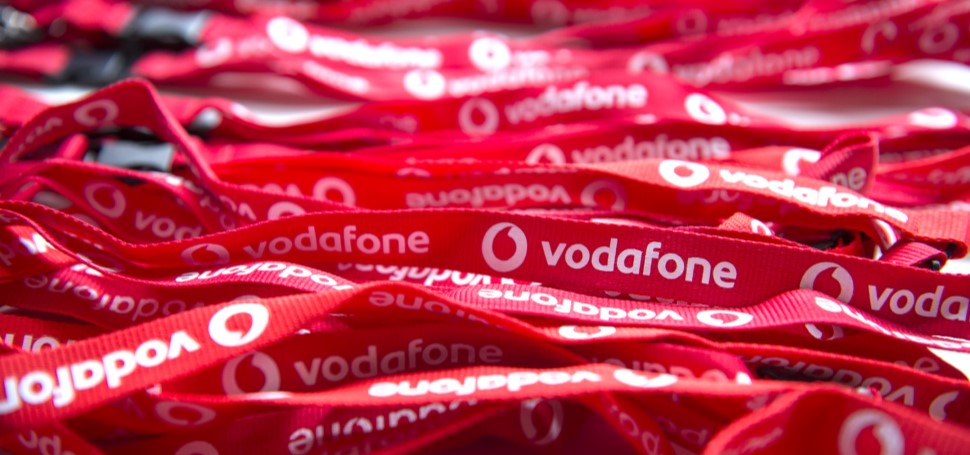Network automation is 'essential' to Vodafone's bid to become a true technology company
Vodafone’s ambition of being a true technology company, rather than a mere provider of telecoms services, is well documented. It is a strategy that permeates through its various projects at a UK and Group level, most recently through its extended partnership with Google Cloud.
Specifically, the Newbury-based firm wants to become a more agile, data-driven organisation capable of powering entirely new services that generate new sources of revenue for both itself and its customers. It wants to be a driver of innovation rather than just a vehicle.
In the UK, investments in fibre, 5G and IoT are all essential in achieving this goal. But central to everything is the transformation and consolidation of its mobile and fixed core networks into a single platform – Redstream.
- These are the best business SIM-only deals around today
- And the best business broadband deals
- Here are the best business mobile phone deals
Vodafone Redstream evolution
Andrea Dona, Vodafone UK’s new Network & Development Director, says that the massive growth of data simply cannot be supported by traditional approaches to network management and capacity expansion.
“It simply isn’t possible without automation,” he tells TechRadar Pro. “You won’t have enough space, power and money to keep up.”
If the increased cost, space, and energy consumption of the necessary equipment are prohibitive, and the required agility, scalability and applications are simply beyond the capability of humans alone. Software, cloud-based infrastructure, and edge computing are all necessary to support future applications.
The evolution of Redstream and the creation of an automated network platform is essential to this vision. The latest development is the integration of Blue Planet’s Transport Domain Orchestration (TDO) technology, which allows Vodafone to automatically provision services for enterprises and developers.
For example, Vodafone can rapidly rollout new services, such as a 5G network slice or provision additional capacity whenever and wherever it is needed and provide similar capabilities for customers to do this themselves without the need for an in-depth knowledge of how telecoms networks and services are built and managed. This ultimately differentiates Vodafone from the competition and generates more revenue.

Greater automation
Automation, coupled with the software-based decentralisation of network resources towards the network edge, allows for a highly scalable, highly capable network infrastructure that can support a range of future applications.
“The evolution of Redstream is a rearchitecting of our converged IP backbone transport network into an edge-based architecture,” adds Dona. “We inherited an enterprise-grade network from Cable & Wireless [through the 2012 acquisition] which works well for our business customers but doesn’t lend itself well to being scalable for consumers.
“The move to the edge is perfectly aligned with our Network-as-a-Platform [strategy] which means anyone, and anything can come and work with the network functions. We like the idea of co-creation and enabling customers to innovate and create something new. The TDO does this because it exposes network functionalities in a vendor and technologically agnostic way.
“It’s compatible with our strategy for Vodafone to move away from being pure telco into a tech company. We don’t want to be a walled garden and our connectivity should be accessible.
“We almost free ourselves of the burden of second guessing what will be the next big use case because we’ll already be at the centre of innovation.”
Network development
Dona points to the company’s achievements in the fields of Multi-Edge Computing (MEC) and standalone 5G (SA 5G) as evidence of the effectiveness of Vodafone’s strategy: “These things don’t just happen randomly. We’ve thought this strategy through and it’s the same strategy for fibre, 5G and digital.”
Another increasingly important part of this strategy is OpenRAN, vendor-neutral approach with standardised designs that allow a variety of firms to supply hardware and software. Operators benefit from increased innovation from a wider range of suppliers, reduced costs and greater flexibility because the threat of vendor lock-in is reduced.
Vodafone has been a vocal supporter of the technology, promising to deploy OpenRAN in at least 2,600 sites in the UK by 2027. Most recently, it has opened a lab at its Newbury HQ to help vendors test their innovations, and successfully staged the industry’s first trial of multi-vendor RAN intelligent controller implementation (RIC).
Vodafone’s desire to accelerate the OpenRAN ecosystem is based on its desire to realise the benefits as soon as possible and build better networks. But, ultimately, the type of technology used to build the network is secondary to business outcomes for customers.
“As Chief Network Officer, my priority is to fulfil the full potential of this network as a platform to drive commercial momentum in the UK,” says Dona. “What we’re doing is trying to abstract the complexity of the network and explain what it does.”
- Here's everything you need to know about Vodafone 5G deals and pricing


No comments